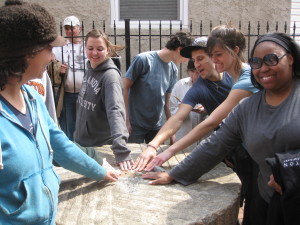 In South Jersey, Cherry Hill is considered a rather privileged town. It boasts a stellar public education system, high per capita income, excellent public works services and great efforts towards sustainability. However, just a few minutes’ drive down the boulevard, and the advantages of Cherry Hill yield to the abject living conditions of Camden, one of the nation’s poorest and most crime-ridden cities. The incongruities between local privilege and its nearby opposite extend towards their ecological advantages as well, the latter a veritable victim of environmental injustice, with Camden as the recipient of all its affluent neighbors’ waste and runoff. The Center for Environmental Transformation in Camden, run by Andrea Ferich and a group of tireless volunteers, works to bridge the gap between these vastly different communities, taking the term “good Samaritan” to a new plane.
In South Jersey, Cherry Hill is considered a rather privileged town. It boasts a stellar public education system, high per capita income, excellent public works services and great efforts towards sustainability. However, just a few minutes’ drive down the boulevard, and the advantages of Cherry Hill yield to the abject living conditions of Camden, one of the nation’s poorest and most crime-ridden cities. The incongruities between local privilege and its nearby opposite extend towards their ecological advantages as well, the latter a veritable victim of environmental injustice, with Camden as the recipient of all its affluent neighbors’ waste and runoff. The Center for Environmental Transformation in Camden, run by Andrea Ferich and a group of tireless volunteers, works to bridge the gap between these vastly different communities, taking the term “good Samaritan” to a new plane.
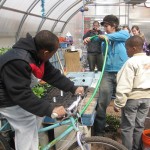 The Camden Center for Environmental Transformation, which is partnered with Sustainable Cherry Hill, makes its home on several blocks of Camden’s Waterfront South neighborhood, with which Ferich has a special connection.
The Camden Center for Environmental Transformation, which is partnered with Sustainable Cherry Hill, makes its home on several blocks of Camden’s Waterfront South neighborhood, with which Ferich has a special connection.
“I just bought my house about a year ago. I live right here,” said Ferich.
Rather than ignore the unfair disadvantage right on her doorstep, Ferich actively works for retribution and neighborhood cleanup. The Center for Environmental Transformation, right in Ferich’s backyard, educates, employs and rebuilds to improve the city. Ferich describes her work as “a great way to unify the neighborhood and educate.”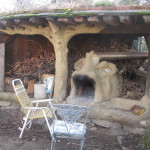
Ferich’s deep concern for her community is not unfounded. The neighborhood shares a home with more than seven scrap metal recyclers and junkyards, a petroleum transfer station, a paint varnish factory and many abandoned industrial sites. Arsonists recently burned down its playground and 50 percent of its houses were abandoned by the time Ferich moved in. The city has 28 known EPA environmental hazards and little is done to rectify these wrongs. Moreover, Camden is at the terminal end of the sewage line, and a whiff of the neighborhood makes this very real offense putridly clear. So unique is Camden’s location at the butt-end of nearby sewage lines that Ferich and volunteers have coined a term to describe it.
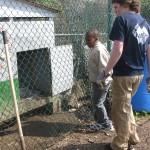 “Sewer shed is a term we came up with for the place where, when it rains, or when you flush your toilet, it all comes to one place. Here, it’s Camden city,” said Ferich.
“Sewer shed is a term we came up with for the place where, when it rains, or when you flush your toilet, it all comes to one place. Here, it’s Camden city,” said Ferich.
To fight their environmental woes, Ferich encourages volunteers at the center to reduce their water usage and has implemented an active water conservation system. Ferich employs people in the neighborhood to create storm barrels to be sold.
“The more storm water we can keep in one area, the better we can make life here,” said Ferich.
Recently, this project found success when Haddon Township purchased one hundred of their rain barrels, a major victory for the center. In addition to employing neighbors in green projects, she invites local school children to help out, for fun and learning. She also hosts a myriad of classes and workshops for locals.
“Every Friday, we have cooking classes. Whatever’s in season, we cook to bring in the aspect of health and renewability, “ Ferich said.
Especially important here is growing and using fresh food for the neighborhood, which Ferich said has only one supermarket. Their medium-sized yard has a high-tech greenhouse, a chicken coop appropriately decorated with a peace sign and a large, compost-friendly plot ready for planting. Boys from across the street, known affectionately as “chicken cowboys,” come over to tend to the chickens and the plants.
“It’s really important to have great places to play,” said Ferich.
While the cowboys’ joy in wrestling chickens is palpable, it is also, as is everything in Ferich’s work, a great boon for the community. The chickens peck the garden plots, thus fertilizing and weeding to make way for food for the community. Ferich is always thinking of new ways to use and reuse what can be used to benefit the area.
“Maybe we can have some sort of creative neighborhood Easter egg hunt,” Ferich suggested lovingly to the chicken cowboys.
Their greenhouse is filled with hundreds of seedlings, occupying planters as well as bathtubs, which will soon be fresh fruits and vegetables.
Walking into the greenhouse, a chicken cowboy exclaimed, “It’s like heaven! This is the most wonderful thing in my life.”
However idyllic their indoor garden is, it is also a great display of hard work and ecological ingenuity. The plants are watered through a self-rigged hydropump, which collects rainwater and is powered by a repurposed bicycle.
“It’s a great way to get exercise, saves energy and it’s better for the plants because the water hasn’t been treated,” said Ferich.
In the greenhouse, Ferich is also working on an innovative new irrigation system, known as “closed-loop aquaponics.”
“It’s called closed-loop because waste is used to feed the plants,” said Ferich.
With this seemingly science-fictional contraption, a tank of live tilapia would start off the irrigation line and the nitrate-rich fish water would circle though the system, providing water and fertilizer for the plants.
The center has done no shortage of good for the community. In the fall, they planted an 18-tree fruit orchard for the fresh produce deprived neighborhood. Ferich has also organized a vast project to create an environmental retreat, which recently ran its first program. The retreat center occupies an abandoned twin-home and former convent, which has been miraculously converted into a bright, clean and comfortable hostel, which employs neighborhood people as cooks. Ferich has also involved local children in painting a mural depicting important neighborhood figures, including writers and activists.
“[The mural is] to say we shall rise, like a phoenix coming out of the ashes,” said Ferich.
Their efforts in community renewal have not gone unacknowledged. Ferich was recently recognized by the EPA for her work in environmental transformation, an announcement that produced rousing applause from volunteers. Poet’s Walk at the center, an alley with bricks honoring neighborhood dwellers favorite poets (Pablo Neruda and God made the list), too, houses a symbol of their revitalization, known as the James Joyce brick.
“There was an international lawyer from Ireland, who brought us a brick from James Joyce’s house, which he gave to places of great resurrection,” said Ferich.
And the Camden Center for Environmental for Transformation truly is a place of great resurrection. Though Ferich’s neighborhood is unfairly ignored and unjustly subject to everything its neighbors get rid of, it is on the rise thanks to those who care enough to nurture it. Like all the plants Ferich and her neighborhood friends grow, the community needs a bit of love, time and hard work to bloom.




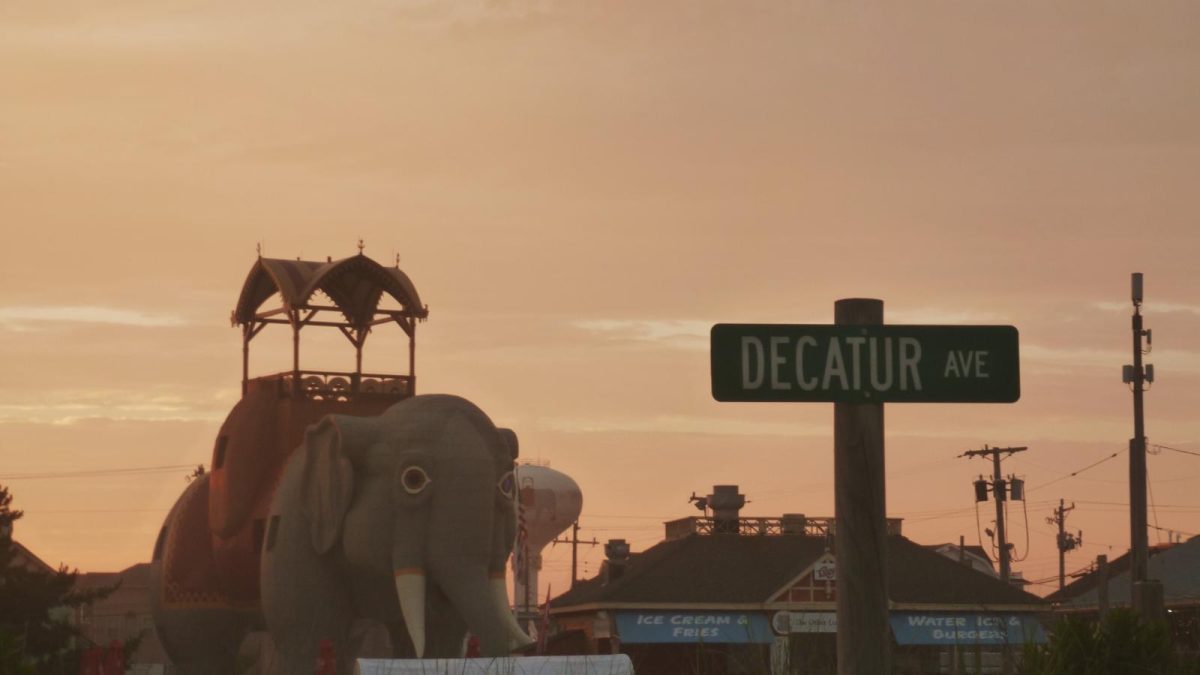

pammie • May 20, 2011 at 6:35 am
What a fabulous piece. Kudos to Hannah for providing insight into this worthwhile project. I have been priviledged to observe some of the center’s activities. It is astounding what they have achieved and what they continue to accomplish. Anyone who takes part in this project will be gratified by their experience and be able to enjoy the “fruits” of their labor.